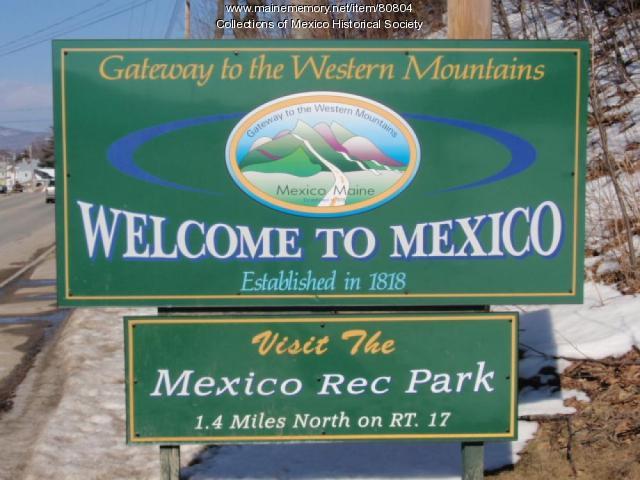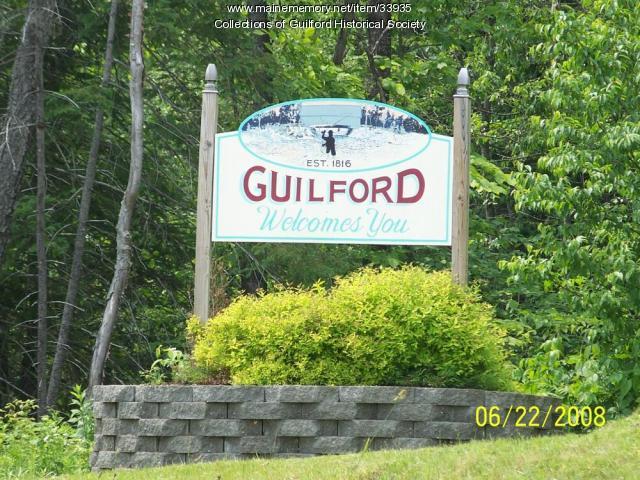Keywords: Welcome
Item 75127
Contributed by: Maine's Paper & Heritage Museum Date: circa 1986 Location: Jay Media: Photographic print
Item 80804
Welcome to Mexico sign, ca. 2008
Contributed by: Mexico Historical Society Date: circa 2008 Location: Mexico Media: Wood, metal
Item 151703
U.S. Courthouse alterations, Portland, 1930-1931
Contributed by: Maine Historical Society Date: 1930–1931 Location: Portland; Portland Client: United States Treasury Department Architect: J. A. Wetmore
Exhibit
When Europeans arrived in North America and disrupted traditional Native American patterns of life, they also offered other opportunities: trade goods for furs. The fur trade had mixed results for the Wabanaki.
Exhibit
Post office clerks began collecting strong red, white, and blue string, rolling it onto a ball and passing it on to the next post office to express their support for the Union effort in the Civil War. Accompanying the ball was this paper scroll on which the clerks wrote messages and sometimes drew images.
Site Page
Bath's Historic Downtown - Welcome
"Welcome What do you get when you combine Bath history, curiosity, and technology with 60 seventh graders and their teachers from Bath Middle School…"
Site Page
"WELCOME WELCOME TO THE GUILFORD HISTORY PROJECT SITE GUILFORD WELCOMES YOU - Inc. 1816Guilford Historical Society Welcome to Guilford, a…"
Story
Welcome home Sgt. Cunningham
by Donald C Cunningham
It was great to be back in Maine.
Story
August 12, 1967 was the most significant day of my life
by Bob Small
How the Vietnam war affected my life
Lesson Plan
Longfellow Studies: "Haunted Houses"
Grade Level: 6-8, 9-12
Content Area: English Language Arts, Social Studies
Longfellow's collection The Courtship of Miles Standish and other Poems was published in 1858. It sold 250,000 copies in two months and over 10.000 copies in London on the first day; Henry Wadsworth Longfellow was extremely popular during his lifetime.
"Haunted Houses" is a work from that collection. It is a poem that is especially appealing around Halloween. The poem welcomes the reader to a place where "The spirit-world around the world of sense floats like an atmosphere . . ."
Lesson Plan
Grade Level: 9-12
Content Area: Social Studies, Visual & Performing Arts
When European settlers began coming to the wilderness of North America, they did not have a vision that included changing their lifestyle. The plan was to set up self-contained communities where their version of European life could be lived. In the introduction to The Crucible, Arthur Miller even goes as far as saying that the Puritans believed the American forest to be the last stronghold of Satan on this Earth. When Roger Chillingworth shows up in The Scarlet Letter's second chapter, he is welcomed away from life with "the heathen folk" and into "a land where iniquity is searched out, and punished in the sight of rulers and people." In fact, as history's proven, they believed that the continent could be changed to accommodate their interests. Whether their plans were enacted in the name of God, the King, or commerce and economics, the changes always included and still do to this day - the taming of the geographic, human, and animal environments that were here beforehand.
It seems that this has always been an issue that polarizes people. Some believe that the landscape should be left intact as much as possible while others believe that the world will inevitably move on in the name of progress for the benefit of mankind. In F. Scott Fitzgerald's The Great Gatsby a book which many feel is one of the best portrayals of our American reality - the narrator, Nick Carraway, looks upon this progress with cynicism when he ends his narrative by pondering the transformation of "the fresh green breast of a new world" that the initial settlers found on the shores of the continent into a modern society that unsettlingly reminds him of something out of a "night scene by El Greco."
Philosophically, the notions of progress, civilization, and scientific advancement are not only entirely subjective, but also rest upon the belief that things are not acceptable as they are. Europeans came here hoping for a better life, and it doesn't seem like we've stopped looking. Again, to quote Fitzgerald, it's the elusive green light and the "orgiastic future" that we've always hoped to find. Our problem has always been our stoic belief system. We cannot seem to find peace in the world either as we've found it or as someone else may have envisioned it. As an example, in Miller's The Crucible, his Judge Danforth says that: "You're either for this court or against this court." He will not allow for alternative perspectives. George W. Bush, in 2002, said that: "You're either for us or against us. There is no middle ground in the war on terror." The frontier -- be it a wilderness of physical, religious, or political nature -- has always frightened Americans.
As it's portrayed in the following bits of literature and artwork, the frontier is a doomed place waiting for white, cultured, Europeans to "fix" it. Anything outside of their society is not just different, but unacceptable. The lesson plan included will introduce a few examples of 19th century portrayal of the American forest as a wilderness that people feel needs to be hesitantly looked upon. Fortunately, though, the forest seems to turn no one away. Nature likes all of its creatures, whether or not the favor is returned.
While I am not providing actual activities and daily plans, the following information can serve as a rather detailed explanation of things which can combine in any fashion you'd like as a group of lessons.















